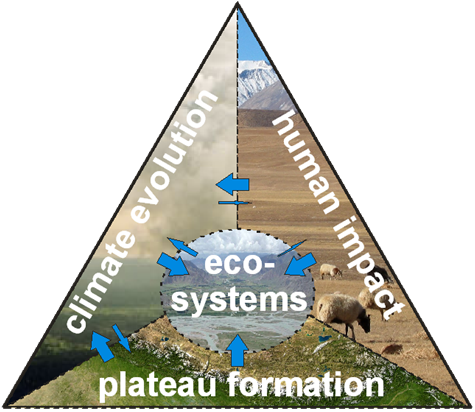Poster, EGU General Assembly 2011, Vienna: 2011-04-03 - 2011-04-08
Abstract:
Since 1959 settle programs have changed the grazing intensity on the Tibetan Plateau (TP). Increasing grazing pressure near villages leads to land degradation, whereas decreasing grazing pressure in remote areas leads to changes in vegetation pattern. To clarify the effect of changing grazing intensity on the carbon (C) cycle of the TP, we investigated differences in belowground C stocks and C allocation using in situ 13CO2 pulse labeling of 1) a montane Trigonella-Kobresia winter pasture of yaks, and 2) a 7-year old grazing exclosure plot, both on the Qinghai TP in 3440 m a.s.l. Twenty seven days after labeling 13C incorporated into shoot tissue did not differ with 43% and 38% of recovered 13C in the grazed and ungrazed plots, respectively. However, in the grazed plots less C was lost by shoot respiration (17% vs. 42%), and more was translocated to belowground C pools (40% vs. 20%). Within the belowground pools, less than 2% of 13C was incorporated into living root tissue in both treatments. In the grazed plots about twice the amount of 13C remained in soil (18%) and was mineralized to CO2 (20%) as compared to the ungrazed plots (soil 10%; CO2 9%). C stocks in the soil layer 0 5 and 5-15 cm under grazed grassland were significantly larger than in the ungrazed grassland. However, C stocks in soil below 15 cm was not affected after 7 years without grazing. We conclude that the larger belowground 13C allocation of plants, the larger amount of 13C remaining in the soil, and less SOM-derived CO2 efflux creates a positive effect of moderate grazing on soil C input and C sequestration.

